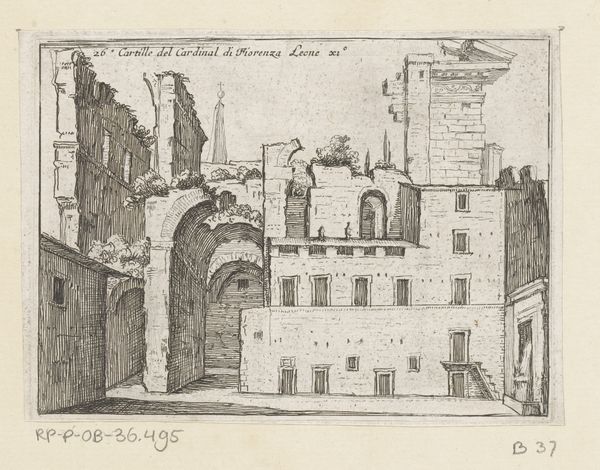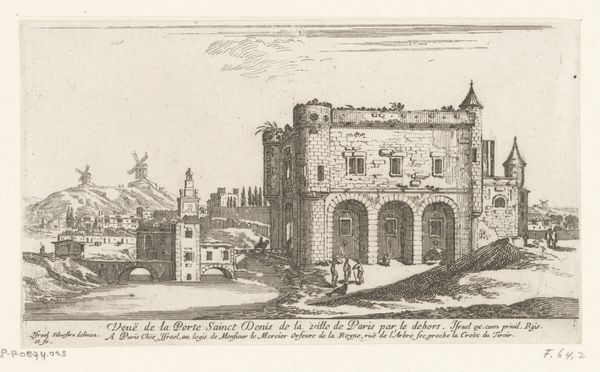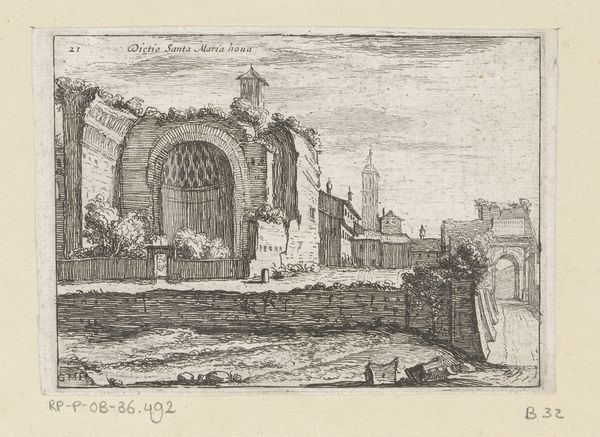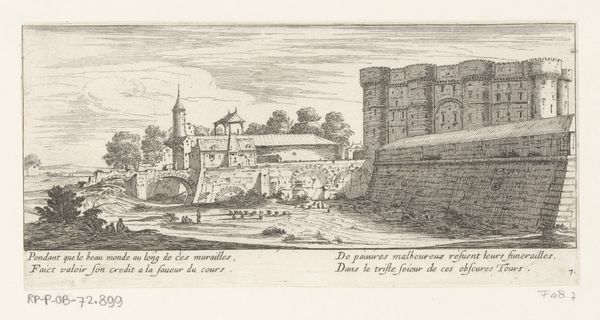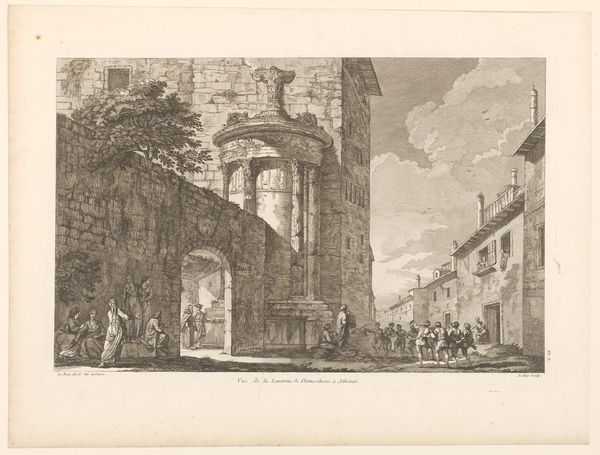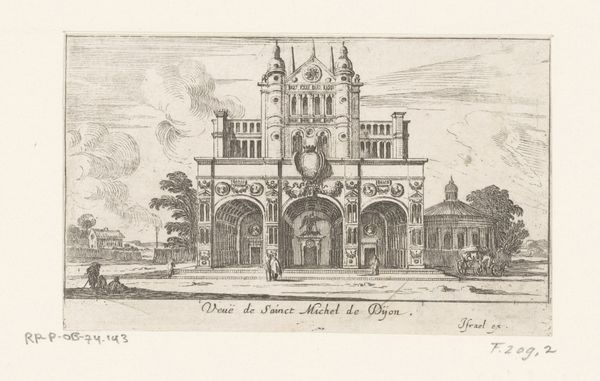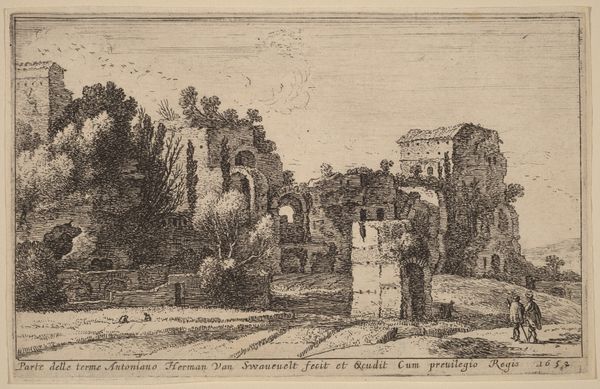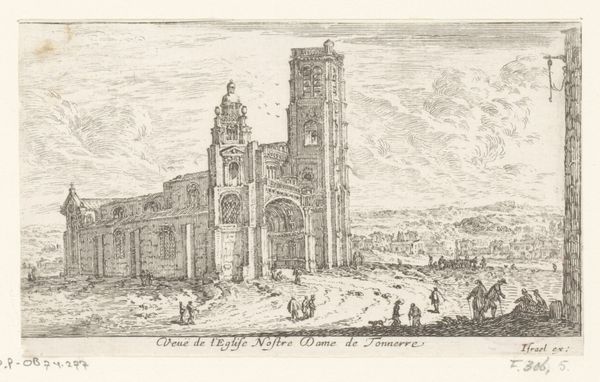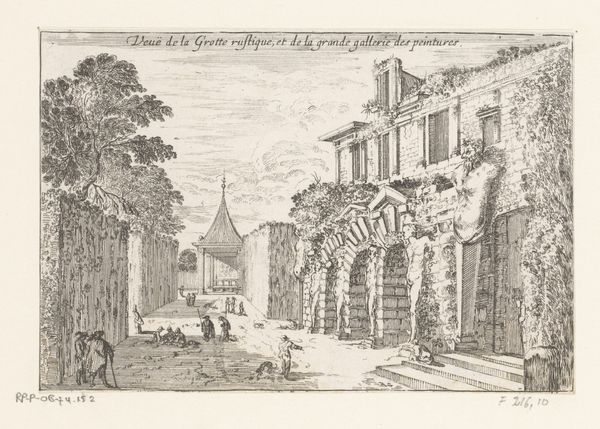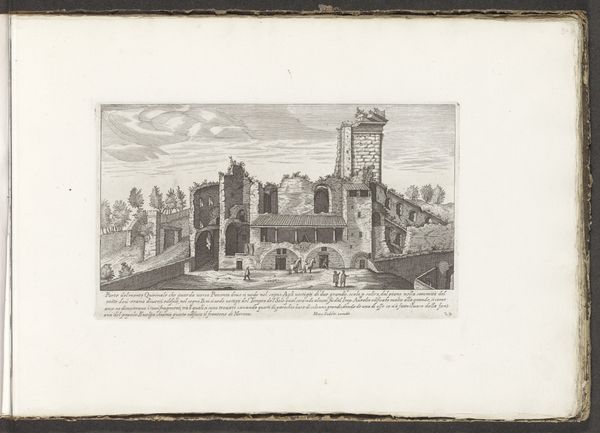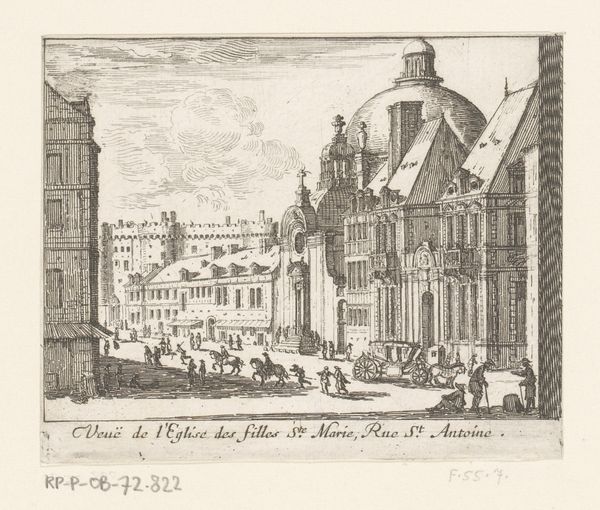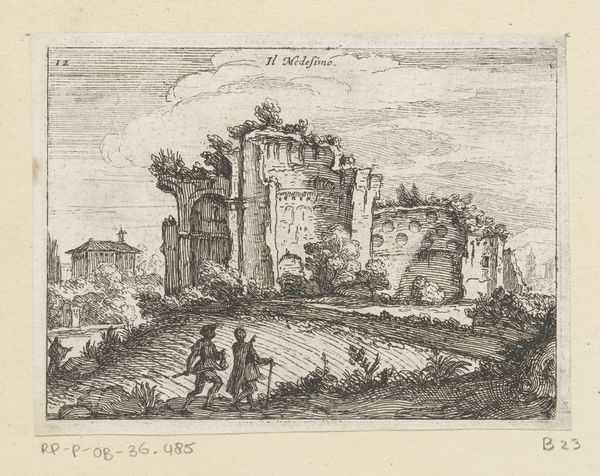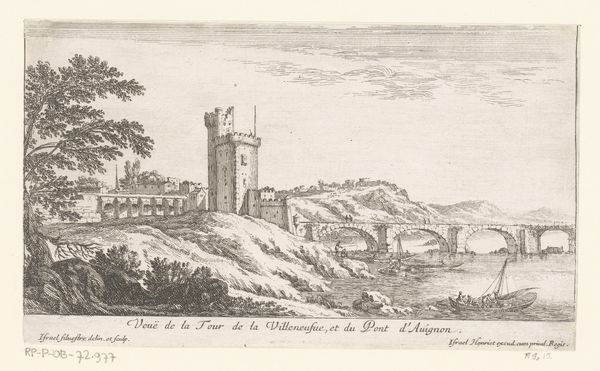
print, etching, engraving, architecture
#
baroque
# print
#
etching
#
landscape
#
perspective
#
cityscape
#
engraving
#
architecture
Dimensions: height 84 mm, width 116 mm
Copyright: Rijks Museum: Open Domain
This print of the Saint-Denis-de-la-Chartre church in Paris was made by Israel Silvestre in the 17th century, using etching. Etching is an indirect intaglio process, where a metal plate, usually copper or zinc, is coated with a waxy, acid-resistant substance called a ground. The artist then scratches an image into this ground with a needle, exposing the metal beneath. Next, the plate is immersed in acid, which bites into the exposed lines, creating grooves. The remaining ground is removed, and the plate is inked; the ink settles into the etched grooves. Finally, the plate is pressed against a sheet of paper, transferring the ink and creating a print. The nature of the process means that this image is made of many thin lines, allowing for great detail. The use of etching, rather than engraving, would have been faster and more versatile. This speaks to a developing mode of production that allowed artists to produce images on a greater scale. By understanding the technical processes behind printmaking, we gain insight into the means of production and consumption during the early modern period.
Comments
No comments
Be the first to comment and join the conversation on the ultimate creative platform.
